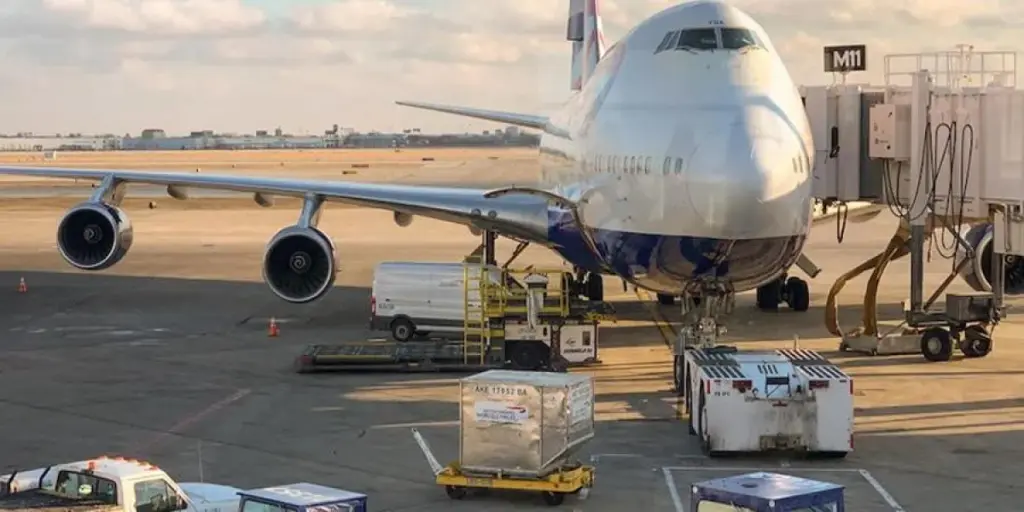While most Generation Z and Millennials may not be familiar with the era of remote shopping that preceded the advent of online commerce, many Generation X/Millennial cuspers may be able to relate to the challenges of returns management or reverse logistics associated with that.
Indeed, the reverse logistics related to mail order or phone order shopping, which were the closest predecessors to modern ecommerce, were markedly more rudimentary and challenging, owing mainly to the lack of technological advancements that today facilitate detailed tracking and instant communication through online chat or mobile messaging.
However, as consumer expectations continue to escalate, the demands on reverse logistics systems have intensified, commanding not only accommodation but also innovation to meet and exceed these evolving needs. Continue reading to discover how this is being achieved in the current market landscape and what the future holds for reverse logistics.
Table of Contents
Understanding reverse logistics
Recognizing consumer demands in today’s market
The role of reverse logistics
Holistic improvement strategies for reverse logistics
The future of reverse logistics
A happy returning
Understanding reverse logistics
Reverse logistics, as the name implies, refers to the transport of goods in a reverse direction – from the customer back to the seller, as opposed to the typical forward logistics process. While this might seem like a straightforward, linear process from point A to point B, in practice, it encompasses various aspects, including numerous post-return activities.
These activities include processing refunds, recycling materials where applicable, refurbishing products, restocking inventory, and reselling processes of items that have been returned and are suitable for new purchases.
In the world of ecommerce, reverse logistics have become a fundamental component, with research showing that they constitute an average of 20-30% of all e-commerce orders. To put this into perspective, the 2023 National Retail Federation and Appriss Retail report highlighted a substantial amount of merchandise returned in 2023. Such a significant amount is primarily driven by consumer demands and preferences, or occasionally due to operational issues within the supply chain.
Recognizing consumer demands in today’s market
Before we proceed to check on what consumers expect from returns, let’s first take a look at what are the top 3 reasons for returns: damaged or defective items (81%), items not fitting (75%), and items not matching descriptions (56%). Corresponding to these figures are the most returned items, including clothing (26%), followed by bags and accessories (19%), and shoes (18%). In fact, these top reasons and returned goods are highly related to the nature of online shopping, which is often seen as somewhat risky by consumers.
More often than not, there’s no certainty that the shirt they order will fit perfectly or that its color will match what’s shown on their digital screen. That’s why should the product not meet their expectations, arrive damaged, or differ from its description, customers seek the reassurance of being able to easily return the item and receive a refund.
Better still, the convenient return processes should be complementary, without instigating any “sense of guilt” or feeling penalized. One of the best ways for them to experience such is through a longer return window – 32 days, to be precise, according to a study. Meanwhile, a separate report highlighted the “freedom” consumers prefer to enjoy in the sense of more online tools that they can help themselves with, as the research found that 81% of them love to have more self-service options.
In terms of reverse logistics, such a preference for self-service tools is reflected in consumers’ predispositions over self-drop-off points for handling their online purchase returns at physical locations, rather than going through the entire re-delivery process of repacking and mailing the items themselves. Finally, with all the easy, free, and convenient reverse logistics processes included, consumers are also expecting a very clear-cut, and easy-to-understand policy that the ecommerce websites or apps can communicate to them clearly.
The role of reverse logistics
In addressing consumer demands today
Both actual and potential returns can be transformed into opportunities when reverse logistics are done right to address consumer demands. Forbes reports that over two-thirds of online shopping carts are abandoned, often due to unsatisfactory return policies. At the same time, separate research revealed that 84% of consumers are more likely to shop again with a retailer if they have a positive return experience.
These results highlight the importance of a well-crafted reverse logistics strategy, as it not only influences potential sales by addressing shoppers’ concerns but also fosters repeat business.
In the meantime, a robust reverse logistics plan, barring unforeseen circumstances, typically ensures safe and hassle-free returns for consumers. Such reliability in handling returns not only garners respect but also builds a reliable brand image for the e-commerce entity. Consequently, this solidifies the importance of a well-managed reverse logistics system in enhancing a brand’s standing in the eyes of both current and potential customers.
Boosting supply chain performance is another key role of a well-executed reverse logistics strategy. By closely addressing consumer needs regarding returns, such a strategy significantly contributes to enhancing the overall efficiency of an e-commerce business’s supply chain. In short, a thoughtful approach to reverse logistics not only meets immediate consumer demands but also drives long-term enhancements in supply chain operations.
In today’s market environment
Trust and customer relationships are fundamental to the success of any business, yet they are especially crucial within the domain of ecommerce, particularly in view of the competitive digital marketplace today. Trust is the currency of today’s ecommerce landscape, it is the key factor that influences a customer’s decision to engage with an online seller in the first place, laying the foundation of customer relationships and catalyzing transactional integrity.
Beyond the initial transaction, the ability to cultivate customer loyalty for long-term, long-lasting relationships becomes paramount. Consequently, a seamless, customer-friendly return process emerges as a crucial benchmark– a litmus test– that customers use to gauge and validate the reliability and customer-centric nature of an ecommerce platform in today’s intensely competitive online arena. Only through a good reverse logistics strategy can ecommerce hopefully retain the customers and keep them coming back despite their constantly growing higher expectations.
Besides these branding and image-related factors, cost reduction is another tangible, immediate role of what good reverse logistics can help to achieve since it ensures a seamless movement of products in reverse, thereby encouraging the reuse, recycling, and reselling of the products, successfully minimizing risks and generate values and serve as a key in managing the flow of returned goods effectively.
Holistic improvement strategies for reverse logistics
Optimization approach
1. Customer-centric return policy: Establish a reverse logistics policy that is clear, flexible, and consistently customer-focused, including a variety of return options, such as self-shipping via a self-service portal and QR code-enabled drop-offs at a wide network of in-store locations formed through partnerships with local retailers. These centralized return centers with multiple options ensure quick issue resolution at return points, enhance the efficiency of returns and recovery of value, and facilitate overall exchanges.
2. Automated return management: Implement automated and transparent systems, such as cloud-based platforms, to efficiently process and track various stages of refunds, exchanges, or credits. This approach strengthens customer confidence and satisfaction by ensuring a seamless reverse logistic process.
3. A streamlined exchange process: Ensure a streamlined and flexible returns approach that allows customers to easily swap items or obtain store credit (facilitating easy exchanges), enhancing the overall return experience and customer retention.
Proactive management approach
While each strategy discussed above aims to enhance the reverse logistics process, adopting a preventative approach that targets root causes at the same time is equally crucial. This should effectively close the loop, ensuring a significantly more efficient operation in reverse logistics.
Since damaged or defective goods are identified as a primary reason for customer returns, it’s crucial to implement stricter quality control measures during manufacturing and before shipping. This, however, should be complemented by an enhanced infrastructure for data collection and product lifecycle tracking, alongside thorough data analytics utilization.
Such an integrated approach is essential in enabling a detailed analysis of the reasons for returns, paving the way for improvements in product quality, design, and logistics. Additionally, the establishment of a highly automated integrated return system helps in efficiently tracking, analyzing, and managing returns, significantly reducing the occurrence of damaged goods.
Simultaneously, addressing industry-specific issues at their root is also a key element for effective problem resolution. This requires dedicated time and focus to thoroughly understand and rectify these underlying causes. For instance, in the fashion industry, sizing challenges can be mitigated by offering detailed size guides, customer feedback on sizing, and virtual fitting tools. This helps customers make accurate size choices initially.
Additionally, clear, comprehensive product descriptions, augmented by high-quality images and detailed specifications, are essential in ensuring the product received matches customer expectations. This approach helps align what customers anticipate with what they actually receive, reducing discrepancies and potential returns.
The future of reverse logistics
Looking ahead, just as with other aspects of e-commerce, technological progress will continue to shape the future of reverse logistics. The integration of automation and AI is expected to bring significant advancements, optimizing the processes while also enhancing both transparency and traceability in the system. In parallel, sustainability, a key trend influencing both lifestyle choices and business operations, is poised to gradually become ingrained in all facets related to reverse logistics, signaling a move towards more environmentally responsible business operations.
The advancement of reverse logistics in ecommerce, though promising, is not without challenges. Customer behaviors and demands are expected to change as ecommerce evolves, requiring more flexible and customized return solutions. Additionally, the regulatory and social landscape is expected to become more complex together with the advancement in technology and the expansions of business environments covering different borders, likely increasing the pressure on reverse logistics operations to adapt and comply with new standards.
Overall, businesses are expected to continue unifying the return process and integrating a product’s lifecycle data to streamline the management of reverse logistics to minimize the impact of returns on business operations.
A happy return
Reverse logistics has become a vital aspect of meeting customer demands in today’s market landscape. Understanding customer needs is key, with reverse logistics playing a crucial role in addressing these needs and adapting strategies to the evolving marketplace.
The implementation of customer-centric policies, automated return management, and streamlined exchange processes are fundamental strategies for improving reverse logistics.
Additionally, a proactive approach towards quality control, and other common product or industry-specific issues also helps in reducing returns.
Moving forward, reverse logistics is set to grow, driven by technological innovation and changing consumer patterns. This progression can be a more streamlined management of returns, embodying the concept of “A happy return” in the e-commerce experience.
Discover more about this topic and stay updated with the latest trends and insights by visiting Alibaba Reads– your source for a wealth of industry ideas and business insights.

Looking for a logistics solution with competitive pricing, full visibility, and readily accessible customer support? Check out the Alibaba.com Logistics Marketplace today.




